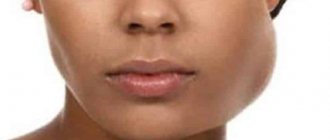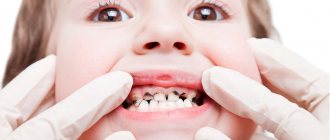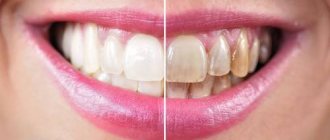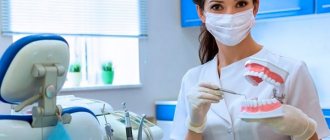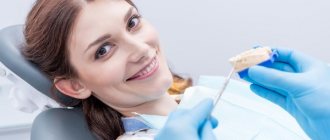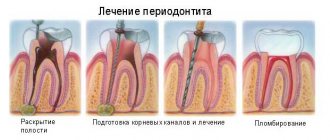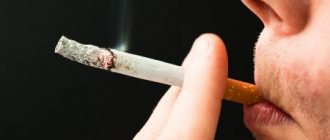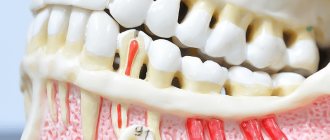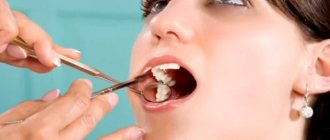Teeth have physiological activity that is not noticeable to a non-specialist. Teeth movement occurs due to the fact that the tooth is not tightly fixed into the bone alveolus, but has a shock-absorbing fastening system in the form of periodontal tissue. That is why the chewing load is evenly distributed over the surface, and the teeth maintain their integrity. However, tooth mobility sometimes becomes pathological. Most often, if parents did not make obvious mistakes in childhood, this phenomenon occurs in people of mature or middle age. Movements that are very difficult to visually record are considered normal for tooth mobility. When mobility becomes noticeable even to the owner of the teeth, then we are talking about a disease.
Did you know that all dental pathologies can be cured with aligners?
I want to know more about the movement of teeth on aligners
A classification of this pathological process of tooth movement has been created:
- During the first stage,
the teeth move back and forth or, in medical terms, have vestibulo-orally directed mobility. - When, in addition to this, the teeth make movements in lateral directions, the second stage
. - At the most dangerous stage, the third stage
, vertical and circular movements are added to those mentioned earlier. The teeth are already beginning to emerge from the bone alveoli.
If the first two stages are subject to treatment and have a certain chance of recovery, then the last stage of mobility is a kind of sentence - the tooth should be removed.
Preventive actions
Treatment of tooth mobility is a long and expensive process. Not all diseases can be cured completely, for example, periodontal disease. Therefore, patients should adhere to simple rules of prevention in order to prevent the irreparable – loss of healthy teeth.
Recommendations from the center's dentists:
- Complete, daily oral hygiene;
- No excessive stress on the jaw;
- Preventive visits to the dentist 1-2 times a year;
- Timely detection and treatment of chronic diseases of the body;
- Carrying out prescriptions and recommendations of dentists.
When contacting Nurimed dentistry, clients can be sure that the staff is extremely attentive to the condition of the oral cavity. The center's doctors will notice the problem even before it begins to manifest itself.
What is the cause of pathological mobility of teeth?
The well-known disease periodontitis is the main cause of this problem. This disease is inflammatory in nature and is characterized by destruction and reduction of tissue adjacent to the tooth. Dental deposits cause inflammation of the gums, which spread to the surrounding bone and ligaments. Inflamed tissue dissolves very quickly and is replaced by granulation tissue. And as a result of the fact that there is no more bone, the teeth acquire pathology in the form of mobility.
Treatment and strengthening of gums at the Family Dentist clinic
We have been treating gum inflammation since 2013, using low-traumatic tooth-preserving techniques.
Over the past 5 years, the clinic has provided assistance to more than 1,260 patients with periodontal diseases, completely eliminated or reduced the manifestations of inflammation, and restored damaged tissue.
The appointment is conducted by periodontist, associate professor Irina Leonidovna Bobkova, developer of a patented method of treating periodontitis with probiotic preparations in combination with low-intensity laser radiation.
Feedback from our patient
I thank Irina Leonidovna Bobkova for her clear, attentive attitude, professionalism and high-quality work.
10/30/19
Our dentistry takes a range of measures to preserve teeth:
|
|
If a tooth is loose, a periodontist will tell you how to strengthen the periodontal tissues. The doctor will select a comprehensive treatment that will strengthen the ligamentous apparatus and stop loosening.
How do teeth move during orthodontic treatment?
A little theory about tooth movement
With the help of connective tissue fibers, the tooth is secured in the dental socket. This ligament is called the priodontal ligament. When the walls of the tooth socket are constantly exposed to the force coming from the aligners to straighten the teeth, areas of tension and pressure appear in the periodontium. Restructuring processes of bone tissue begin to occur in the tooth socket, which trigger bone resorption (resorption) and then its construction (osteogenesis). In the area of pressure, the periodontal fissure contracts, and in the area of tension, expansion occurs. Under pressure, the fibers of the ligament of the tooth and the nerves and blood vessels located in these places are compressed. The surface of the alveoli, located at the root of the tooth, experiences resorption.
In the area of tension, the ligaments of the tooth are stretched, and the process of bone tissue formation occurs. Both of these processes occur simultaneously, but with varying intensity, depending on the stage of treatment. The desired movement can only be achieved by applying a certain force to the jaw and teeth. Empirically, it has been found that less force exerted by aligners to correct a bite results in faster tooth movement. This is explained by the specific processes of regeneration and resorption of dental tissue and alveolar structures. This is why orthodontic tooth movement is a slow process, produced in the desired direction under the influence of small forces. If you make a greater load to move the teeth, the neurovascular bundles will not have time to rebuild in time. Without sufficient innervation and proper blood flow, the position of the tooth is difficult to correct.
Now let's see how teeth move in practice when treating orthodontic pathologies.
Tooth movement in the treatment of dental crowding
How crowded teeth are moved into a straight position using aligners
The clinical director of the Star Smile company, orthodontist Alexander Veniaminovich Spesivtsev, comments on the process of tooth movement:
— Let’s pay attention in the top video to how the upper and lower jaws come into contact with each other at the end of the treatment situation: we see an excellent position, excellent inclination of the front teeth, excellent shape, coincidence of all midlines, all linear parameters. Which, in general, allows us to think that the patient as a whole should be satisfied with this result.
The most important thing - as you have already noticed by watching the video - is that one of the key points of the aligner treatment technology is the creation of a 3D virtual setup
. That is, you and I sit in front of the computer and see WHAT will happen as a result of treatment BEFORE it starts. This emphasis is made on purpose, since many of us find it difficult to understand in principle how teeth move.
This kind of technology, this kind of 3D image, provides the answers. Therefore, look, analyze and begin your orthodontic journey in correcting your not very straight teeth!
Tooth movement during crossbite treatment
This patient has a crossbite. We see not a very narrow, but on the contrary, a very wide skirt-like shape of the upper central incisors. In aligner technology, we very often use a variety of different ways to adjust the size of teeth in order to create room for alignment. Therefore, here, as they say, “your hands are itching” to intervene in the situation and a little - let’s say - “file” the teeth on the sides to make them more attractive. And thereby create the optimal place for leveling.
A 3D virtual setup shows how straight his teeth will become with a crossbite
Quite classic tasks are faced by every doctor who shows a 3D virtual setup to a patient. The setup shows how the position of the teeth changes, how the shape changes slightly. On the lower jaw and on the upper jaw on the left we see the not entirely correct position of the last two teeth, two molars: the upper one tilts very strongly towards the buccal side, and the lower one, on the contrary, tilts towards the tongue. This is a crossbite. The video shows the movement of all teeth to their normal position.
Diagnostics
Full recovery of the patient is possible only if a reliable cause of dentition instability is identified. The dentist conducts a full, comprehensive diagnosis for clients in order to develop an optimal treatment plan.
Advantages of our examination:
- Qualified personnel;
- Modern equipment;
- Using a complete list of examinations to identify the cause of the disease;
- Get results quickly.
Our doctors will be able to quickly understand the mechanism of the problem and immediately begin to treat it.
Did you know that all dental pathologies can be cured with aligners?
Star Smile company is a leading Russian manufacturer of aligners.
The design of each set of aligners for patients is based on accurate mathematical modeling of the physiology of patient tooth movement, taking into account the existing pathology. What does it mean? This means that your teeth will be put in place as quickly and comfortably as possible with the help of Star Smile aligners! Star Smile specialists work in more than 70 (!) cities of Russia. We can always advise you in your city for free. And the main thing is to cure it once and for all with the help of aligners!
If the tooth is a little loose
If your teeth have just begun to loosen, then you need to urgently take preventive measures. If you don’t know why your teeth have become loose, then it’s better to see a doctor for control.
What to do after being examined by a doctor:
- Brush your teeth and rinse your mouth twice a day.
- Correct the bite if there is deformation.
- Monitor the condition of your gums.
- Eat right, including vegetables, fruits and foods rich in fluoride and calcium in your diet.
These methods will help strengthen your teeth and prevent further loosening.
If the cause of mobility is tartar, we will carry out cleaning
Plaque and tartar push the gums away from the crown and form periodontal pockets. Inflammation occurs, the development of multiple caries and destruction of periodontal joints.
After professional cleaning, the swelling subsides and bleeding decreases. If the pockets are deep, we perform curettage to remove subgingival plaque, hardened deposits and bacteria. According to indications, we simultaneously use bone reconstructive surgery.
Our experience shows that the effect will be long-lasting if the patient approaches home hygiene responsibly. We will adjust your technique, select brushes and pastes. The periodontal tissues will gradually become stronger and the pockets will tighten.
How much can root units become loose?
Doctors distinguish several degrees of mobility:
- I. The displacement of the crown in the horizontal direction is no more than one millimeter relative to its neighbors.
- II. Displacement of more than a millimeter. In parallel, slight loosening relative to the vertical axis may be observed.
- III. The unit moves in all directions.
- IV. The crown is very mobile and can even rotate around its own axis.
It is clear that it is easiest to treat a patient with the first degree of mobility. The stronger the loosening, the more serious manipulations the doctor has to carry out in order to keep the dentition intact.
Treatment
When selecting a treatment regimen, the dentist takes into account:
- the general health of the patient;
- the reason for the violation;
- condition and location of the tooth;
- degree of loosening.
If the disorder is caused by internal processes, for example, hormonal imbalance or endocrine disease, then you need to work with the root cause. If the unit has become mobile due to injury or destruction of periodontal tissue, the question of splinting arises - installing a special dental structure that forces the crown to constantly be in one position.
Types of splints used in treatment
To relieve a person from severe mobility of fangs, molars, and incisors, doctors use the following splinting systems:
- Ring. Metal rings connected to each other are put on top of the crowns. As a result, mobile units become more stable.
- Semi-circular. It works in a similar way to the previous one, but the elements used look like half rings rather than rings. To achieve better aesthetics, they are fixed on the back side of the dentition, so when you smile they are almost invisible to others.
- Cap. The tire includes small caps connected to each other. They cover the cutting edges and partially extend onto the surface of the crowns.
- Coronal. Movable teeth are pre-ground and then covered with dental crowns. On both sides of the bridge, one healthy, stable unit is ground. Due to this, progression of loosening becomes impossible.
- Tab. This treatment option is similar to the cap treatment. Only here they don’t put caps on top of the crowns, but make indentations in the cutting surface of the teeth and place special miniature inlays in them. It turns out that all units of the row are reliably connected to each other.
Splinting is not always effective. If the abnormal process is severely advanced, then after a while the teeth begin to loosen again. But in most cases, doctors still manage to eliminate mobility using splints.
Content:
- When it's all about physiology
- Why is there a problem?
- How much can root units become loose?
- Treatment
If, when pressing on a canine, incisor or molar, it begins to become very loose, you should urgently consult a doctor. The doctor will conduct a simple diagnosis and explain what’s going on. Refusal of dental treatment for pathological tooth mobility is a step towards a toothless smile.
Recovery
To reduce discomfort after removal, follow these recommendations:
- abstain from food for 2-3 hours,
- temporarily exclude too cold and hot drinks,
- for difficult removal, use an ice compress,
- After consultation with your doctor, you can take a painkiller.
Prohibited:
- rinse your mouth with soda solutions, tinctures, etc.,
- remove a blood clot from the socket,
- smoke and drink alcohol.
It is also worth giving up hard, too sour and spicy foods, and intense physical activity in the first few days after the procedure.
Stock
-47%
Dental implant Osstem 35,000 rub.
18500 rub.
get -13 %
Metal-free dental crown made of zirconium dioxide 40,000 rub.
35,000 rub.
get -9 %
BASAL COMPLEX - Restoration of teeth on 1 jaw in 3 days 330,000 rub.
300,000 rub.
get -12 %
Metal braces 85,000 rub.
75,000 rub. get
Part of the molar is movable
Teeth can become loose and fall out in parts. When half a tooth is loose, the dentist takes an x-ray to determine whether the root is affected or only the outer part of the crown is damaged. If the root is not damaged and the base is preserved, then it can be saved. The upper part of the crown is removed and a pin is installed in its place. Then extension is carried out. If the pin cannot be placed, then a polymer filling is placed, and a crown is placed on it. When a tooth becomes very loose and the root is crushed, it is removed and an artificial crown is placed in its place.
Aggressive forms of periodontitis
The pathology is characterized by rapid destruction of dental ligaments without signs of soft tissue inflammation. The disease has an atypical course, often develops rapidly, and is caused by microorganisms with high pathogenicity:
- Children - occurs during the eruption of baby teeth, accompanied by damage to the periodontal joints and disruption of the structure of bone tissue;
- Prepubertal - observed in children aged 8-12 years;
- Demsonosis - develops in adolescents against the background of hormonal changes, usually affecting the first molars;
- A rapidly progressing form of the disease - often found in people under 35 years of age, difficult to treat, the pathological process affects both jaws;
- Ulcerative-necrotizing gingivitis periodontitis - the disease severely destroys periodontal tissue, causing the formation of interdental craters.
Aggressive forms of the disease require a special approach to treatment. Early visit to the dentist increases the chances of cure.
The patient's condition depends on the stage of periodontitis and the form of the disease. In the initial stage, complete recovery is possible, or the disease may enter a stage of long-term remission. High-quality dental treatment (prices) and regular oral hygiene improves the prognosis of the disease. Neglected pathology leads to irreversible consequences: loss of teeth, destruction of bone tissue, disruption of the functioning of body systems.
If you have any questions, our dentistry in Kazan provides free consultations, and we will be happy to help you, explain everything and provide dental treatment.
If the root one is unsteady
Often a healthy tooth begins to hurt sharply and become loose. Permanent teeth can also become loose, even if they are molars. You don’t need to endure it, but go to the dentist. The doctor prescribes disinfectants: rinsing with chlorhexidine and furatsilin solution, gel applications.
If the gums are inflamed, then anti-inflammatory and regenerating drugs are prescribed. (“Trental”, “Olazol”, etc.). Physiotherapy also helps stop the process. For example, vacuum massage, darsonval, ultrasound procedures.
After stopping the inflammatory processes in the oral cavity, the dentist strengthens the teeth in the correct position and applies a temporary splint. If a wisdom tooth is loose and hurts, it is most often removed since it does not play a special role in the chewing process.
Tooth-preserving therapy
Depending on the clinical picture, splinting, prosthetics and implantation are performed. Splinting is performed to fix the dental unit under anesthesia. If it is impossible to save the natural teeth, they are extracted and new implants are installed. Artificial roots are installed no later than three days from the moment the native root is extracted.
In cases where loosening occurs due to weakening of the gum tissue, professional oral hygiene is carried out. Successful therapy helps to normalize the movable elements of the dental system. Complex treatment may include hardware therapy, gum massage, and physical therapy.
If you notice characteristic symptoms, immediately contact the specialists of the Alpha Dent clinic. With early treatment, the problem can be solved with minimal risk to the health of the dental elements.
What to do if your teeth are loose and your gums hurt
When gums bleed and become inflamed, teeth can also become loose and even fall out. One of the factors that provokes this condition is acute or chronic gingivitis. The inflammatory process provokes a light plaque on the teeth consisting of microbial pathogens or the formation of tartar on the teeth if you do not take good care of the oral cavity. If gingivitis is not treated, the germs travel deeper into the tissue. Periodontitis develops when pus forms on the gums, the necks of the teeth are exposed, and constant pain appears.
With periodontitis, the inflammatory process occurs in the tissues, from the base of the tooth root. At the same time, gumboil appears and the gums become very swollen and painful. Sometimes, due to chronic infection, cysts form on the gums; they do not appear immediately. In severe cases, a granuloma forms on the gums, in which bacteria attack the gums and roots of the teeth. In this case, the person experiences severe itching and high fever.
Also, gums can hurt after tooth extraction, installation of implants, braces, appliances, or improper dental treatment.
If your teeth are loose in your gums, you should not:
- Press your finger on the gum
- Heat with compresses, sand, warm rinses
- Open an abscess at home
- Taking too many painkillers
First of all, you need to relieve pain with pills or injections. But under no circumstances should you exceed the dosage. Paracetamol, analgin, ketanol and other similar products are suitable. You can also use gels with an analgesic and cooling effect.
You can rinse your mouth with Chlorhexidine and Miramistin. This needs to be done in the morning at lunch and in the evening to get results.
Symptoms of moving teeth
- Bad breath.
- Local redness in the area of a loose tooth.
- Fixation of purulent exudate near periodontal pockets.
- Exposure of the cervical area, increased sensitivity.
- Discomfort when chewing food.
Symptoms may vary in each case. When the first signs of grade 2, 3, 4 tooth mobility appear, you must make an appointment with a dentist so that he can conduct a quality examination.
